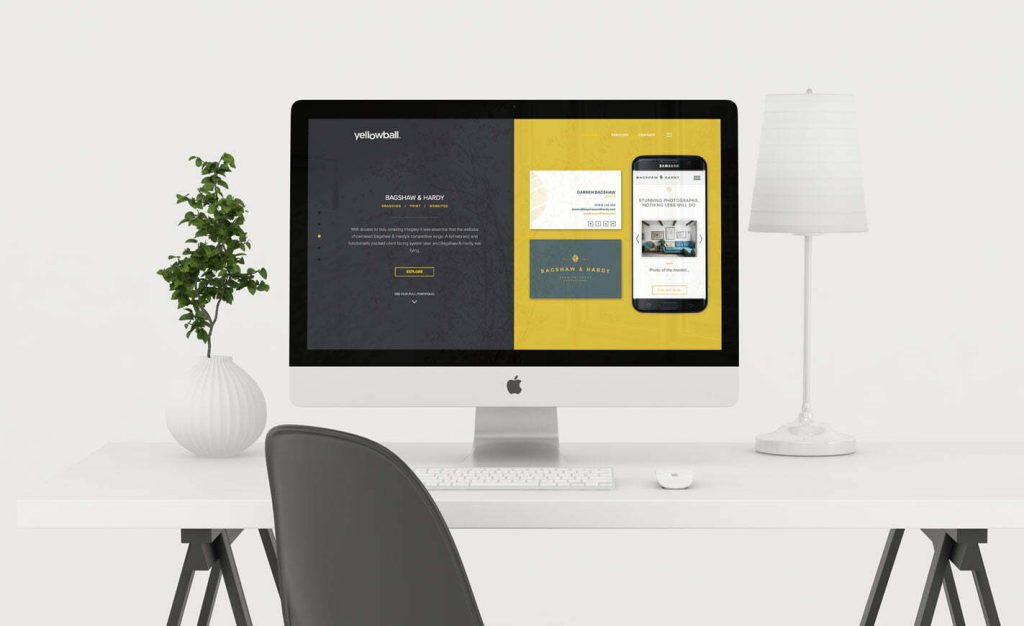In this article, we’ll be discussing how to scope a website project effectively. We’ll be covering the following main points:
- Website scope objectives
- Key components of a Website Scope
- How to create a Website Scope: Step-by-step
- Tools to use and documentation to include
- Website scope pricing
- Benefits of website scoping
Read on to discover more about scoping a website project.
What is a Website Scope?
A website scope is a detailed document that outlines the objectives, deliverables, requirements and limitations of a website development project. A website scope helps to provide clarity and understanding to all parties on what the project entails.
Why is Creating a Website Scope Important?
Creating a website scope at the outset of a project is important to ensure expectations are clear and requirements and responsibilities are communicated. The website scope can help with project management, helping to make sure the project keeps to the timeline. The scope helps to identify any risks and reduces the likelihood of disputes, as well as allowing for clarity on costs and budget management for each component of the project.
Key Components of a Website Scope
The key components of a website scope include:
- Documentation
- Project Objectives
- Deliverables
- Requirements
- Stakeholders
- Timeline
- Costs
- Sitemaps, User Flows & Sales Funnels
- Specific Functionality
- Must-haves and nice-to-haves
- The Process
- Exclusions
We’ll discuss these further in the following sections.
Step-by-Step Guide: How to Create a Website Scope
Step 1: Prepare examples & inspiration
Both parties want to go into the first meeting with a general idea of what they want to achieve, but should also be flexible and welcome new ideas. A few ways to prepare include:
The agency:
- Illustrate the client’s options by preparing different examples of specific functionality.
- Research competitors, what they do well and how they could improve.
- Create a questionnaire for the client to complete prior to the meeting. This can be distributed internally in advance.
The client:
- Provide the agency with access to any key collateral or analytics, i.e GA, Search Console, Key Messaging, Imagery or Video.
- Identify websites that you particularly like or think could be applicable to your website project.
- If you are unsure over a particular idea, it’s worth checking with the agency prior to the meeting so that it can be researched if necessary.
Step 2: Define Objectives
Start with ‘SMART’ goals to help define your objectives. ‘SMART’ stands for specific, measurable, achievable, relevant and time-bound.
As a client, your goals will allow you to give better guidance to the agency. They can also help you define your budget and whether the project is viable.
As an agency, knowing your client’s objectives will provide structure to the project, keeping both parties focussed on what you are looking to achieve.
Step 3: Explore Sitemaps, User Flows & Sales Funnels
Work to define how a user will navigate your site, key items to explore include:
Marketing Campaigns
Can you map out your marketing campaigns? What will the key messages be within these campaigns? Your sitemap and user flow should support your marketing campaigns, not work against them!
User acquisition / Inbound funnel
First of all, does your sitemap support your SEO strategy? We’re biased but we would always recommend ensuring that your sitemap can support an SEO campaign either immediately or in the future.
Furthermore, we can’t just rely on the homepage as the starting point for all users. For example, product/service specific marketing campaigns may send users directly to inner pages. A comprehensive content marketing campaign may result in large amounts of traffic originating on blog articles.
Devices
We live in a multi device world, adding another level of complexity to user flows. How will behaviour differ between someone searching on a desktop and someone using a smartphone? Will their experience need to be different depending on the device and, dare I say it, dependent on the product/service they are viewing?
Step 4: Discuss Specific Functionality
This is what most people think of when a website scope is mentioned. Most people prefer to tackle the really large pieces of functionality (such as a database or member’s area) first. We won’t argue with you here, it’s really a matter of preference so why not get the big ones out of the way whilst you’re feeling fresh?
The key thing to note here is that it is the agency’s responsibility to ask the right questions. They should be more experienced than the client when it comes to scoping a website project. As such, they should know that a brief description ain’t gonna cut it.
Website Scoping Functionality Example:
Consider this website scoping functionality example, for inspiration on questions to consider when considering your website’s functionality:
“We need a member’s area where people can access member only documents”
We’re going to have to dive a little deeper than that.
- How are these documents uploaded?
- Do members get push notifications for new docs?
- Can some members see documents that others can’t?
- What about editing member profiles?
These are just a few examples of overarching questions. These should then lead you to explore each piece of functionality within the members area. Don’t breeze over anything. It’s far better to have too much detail than to not have enough.
Step 5: Consider Must-Haves and Want-To-Haves
- If you’re happy with a binary system you can use “must-haves” and “want-to-haves”.
- Alternatively, you might have a traffic light or more complex grading system.
Whatever you side with, this is your opportunity to dust off those objectives, sitemaps and user flows we discussed previously and start comparing. Additional functionality can be expensive so put your CFO hat on and figure out what truly contributes to the objectives and what are might be a spur of the moment techie idea. It doesn’t mean that you can’t include the ideas that don’t directly contribute to the objectives, it just means you are categorising them in case the budget doesn’t allow for extra functionalities.
Step 6: Define The Process
At this stage, the process should be clearly defined.
All elements of the process including agency and client requirements should be detailed in the process. Client feedback stages and approvals should be detailed in the timeline, with set limits of number of feedback rounds. At this stage, it’s useful to communicate the implications if any deadlines are missed. Setting clear expectations also helps to prevent scope creep.
Step 7: Be Realistic with Costs
Probably the most important outcome of a website scope is a clear view on the cost of a project. It allows an agency to break down a website into component parts, assigning a cost to each and providing a total that both parties can agree on.
Don’t forget that not all agency processes are the same. In fact, far from it. Your own design & development process will have an accompanying time and skill requirement which translates to a specific cost. If one agency offers no proof stages and a junior designer, but another offers 3 proof stages and a senior designer, their costs are likely to be very different.
Our top tips on things agencies should bear in mind when including costs within a website scope include:
- Be realistic, or add buffer, or both: Remember that you will be assigning time/costs to component parts of a project. As such, a small miscalculation on every item will add up to a rather large sum as a whole. Ensure to be realistic with time needed at each stage of the process.
- Factor in communication time: Factor in time spent in meetings and for email communications.
- Start with the original price: Even if you’re going to match a price or give a discount, as an agency you should price the project up internally to start with. This way you will have a real consideration of how much this project is going to cost you. You will then be anchored to that price and be able to view any discount with a much clearer view of the situation.
- Discounts should be shown: Display the original price, followed by the discount with any reasoning, to avoid any disputes or misunderstandings later in the process.
Step 8: Finalise the Agreement
The agency and the client have worked together to isolate and detail every piece of functionality and the associated costs. There are just a few more items that we would highly recommend you include in the scope of work/contract:
Agree What’s Included AND What’s Not Included
By this stage you’ll have been laser focussed on scoping the functionality and processes that are included within the project. However, you also need to agree on what isn’t included. These items could range from pieces of functionality that have been mentioned in passing, to proof stages, uploading of content, migration or even additional meetings.
As an agency you’ll want to prevent scope creep so these should be documented, but as a client you may want to know what your options are. We would therefore advise that these ‘not included’ items are also priced up so that both parties are clear on the costs should they have to be included at some point during the project.
Agree Timeframes
Time is money, as they say. The scope should also include a realistic project plan. If the documents are there to provide clarity on the project then it makes sense that everyone is also clear on what needs to be delivered at what time. Timeframes focus teams.
Tools and Documentation to use when Preparing a Website Scope
Here are a few platforms that you could use, but be aware that with a little research you might find something better suited to your needs:
- Smartsheet
Best for: If you like Excel, however, would like to use something a little more visual/flexible. Think of Smartsheet as Excel for the modern app driven age. It still uses the same cell based layout but allows instant viewing of your data in alternate formats such as GANT charts.
- Trello
Best for: If you like Kanban. Trello thrives off simplicity. Cards are laid out in a Kanban format (think Solitaire style columns), with each card representing a certain piece of functionality or problem. Drag and drop, tag, set deadlines, attach files, @mention and more within each card.
- Jira
Best for: If you like Tech powered tools. It’s all about the power of the system, aesthetics comes second. Jira is the most powerful of the three, allowing integration into third party software to expand reach. Whilst improvements have been made to the UX/UI, it is heavily tech focussed. Think of it as a pure play product/project management system angled at development.
Mistakes to Avoid when Creating a Website Scope
Often the focus of a website scope tends to focus heavily on development, however, web design and content are equally critical. Any web design process needs to be scoped thoroughly to ensure expectations are clear.
- Ignoring Website Wireframes/Concepts
There can be confusion about expectations if wireframes and design concepts are not discussed thoroughly. Within the scoping process, consider how many wireframes will need to be created, the level of detail that will be required and any rules for amendments during the concept stages. This can also help to prevent scope creep.
Pro tip: both sides need to be aware of the potential risks for the other party. For an agency, the risk is a client that fails to be decisive or wants to make endless changes. For a client, what if they don’t like any of the concepts? The latter is somewhat mitigated by a thorough research and preparation process.
- Ignoring content creation/content creation and type
Content creation can sometimes be viewed as an afterthought, however this can play a crucial role in the success of the project. Ensure to clearly define which party is responsible for content creation and uploading, to avoid delays and added costs.
- Failing to define the web development process, including uploads
Ensure to define the content upload process, or the migration process when redesigning a website to make sure expectations are clear on both sides.
- Failing to set out specific timeframes
Set out clear timeframes, ensuring that the stages for content creation, feedback, and approvals are explicitly defined. This should include information on timeframes needed from both the agency and client side to avoid any delays.
- Failing to provide specifics on designing the site
It can be useful to include a number of page templates, proof stages and any additional costs for extra design rounds. Feedback loops and design styles should be defined early on to avoid miscommunication and delays.
- Failing to allow time for testing/QA
Testing time, QA and documentation should be factored into the scope to avoid delays. Consider the time needed for issues such as bugs or change requests.
- Not considering domain and hosting responsibilities
Responsibilities for domain and hosting should be defined as early as possible in the process, to avoid any delays in launching the website.
- Warranty period
Consider the warranty period and how long this should last. Outline how functionality issues may be addressed and how the warranty period may be affected if the client makes any changes after launch.
- Ongoing maintenance, Support and Crisis Management
Include SLAs for ongoing support and crisis management, and consider which teams would be involved in this process such as internal tech teams, the agency and third-party hosts.
Amending a Website Scope Throughout the Process
Scope changes may include changes to proposed functionality, layout, timeline, responsibilities or budget for example. Scope changes may result from decisions taken by a project manager or stakeholder.
Clear documentation is key to ensure any changes from scope are clearly documented and have been agreed upon by both parties. This can help to reduce confusion later in the process.
Implications to timescale and budget should be considered in the event of changed scope. Discuss the proposed changes with the wider team to fully understand their impact.
Benefits of Website Scoping
There are three main benefits to creating a website scope:
- Clear Contract
- Accountability and Responsibility
- Provides Clarity/Defines Project Goals
1. Clear Contract
It creates an in depth scope of work upon which the contract can be based. In layman’s terms, the agency knows that they are selling and the client knows what they are buying, in detail. It not only prevents surprises during the project but also prevents underselling/overselling before the project has even started.
2. Accountability and Responsibility
It defines accountability and responsibility. It limits “he said, she said”, or more accurately, “I thought you were going to do that”.
3. Provides Clarity/Defines Project Goals
It forces both parties to really think about the project. It’s all too easy for an agency to rush towards the sale or for the client to want the project started at which point the workload is offloaded to the agency. This is where mistakes happen.
Creating a website development scope of work template
Developing a website development scope of work template is highly advantageous as it promotes effective communication, sets clear project objectives, defines responsibilities, and ensures a streamlined and successful website development process.
At Yellowball, a leading web design agency in London, we’ve got a proven record for helping business owners across the UK develop powerful marketing strategies that drive measurable results. Let us show you how to make digital marketing drive your organisation’s success. Contact us today.
Read more: Website Brief Template Examples and 10 Signs You Need a New Website.









